Urchfont Manor, Wiltshire: From local council facility to 'inspired contemporary creation'
The restoration of Urchfont Manor and its gardens has resulted in an exceptional creation that unites the formal with the informal in a modern garden that nods to the past. Even better, it's now joined the National Garden Scheme; George Plumptre, chief executive of the NGS, takes a closer look, with photographs by Claire Takacs.
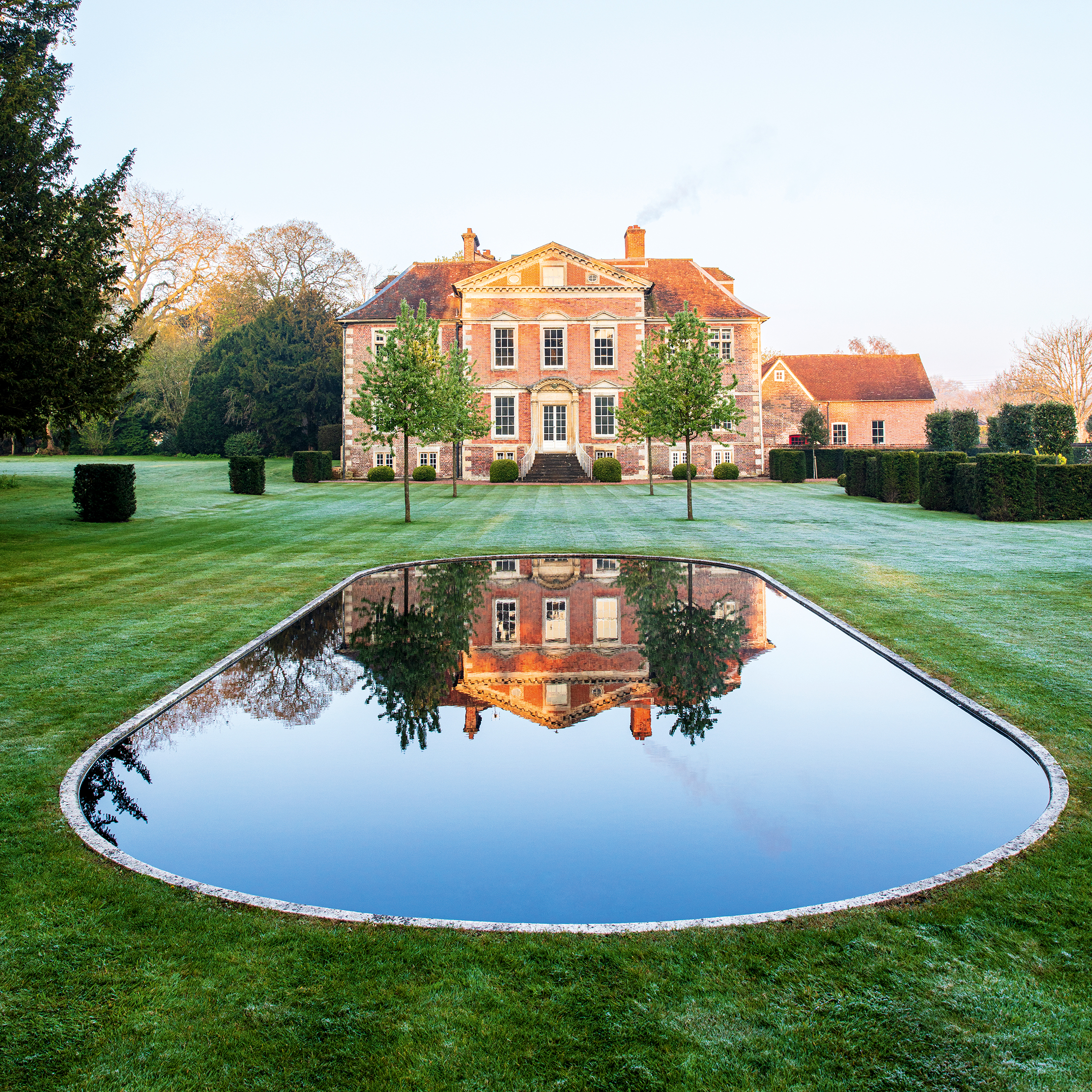
Within a few years of buying Urchfont Manor in 2013, Chris Legg and Eleanor Jones, with the help of a friend, landscape architect Paul Gazerwitz, had given their home a new vista that unites house and garden, as well as evoking the formal Baroque of the house’s late-17th-century past. It is an inspired contemporary creation that is impressively in tune with the place’s historical zenith. It's now being opened to a wider audience: on June 19 2021, Urchfont will be open to the public via the National Garden Scheme for the very first time.
From 1946 to 2012, Urchfont Manor had been owned by Wiltshire County Council and used as an adult education centre. Various parts of the 13 acres of gardens had been given over to different projects, but, with restricted funds, maintenance and development was minimal. Consequently, Urchfont’s new owners had a near-blank canvas from which to start.
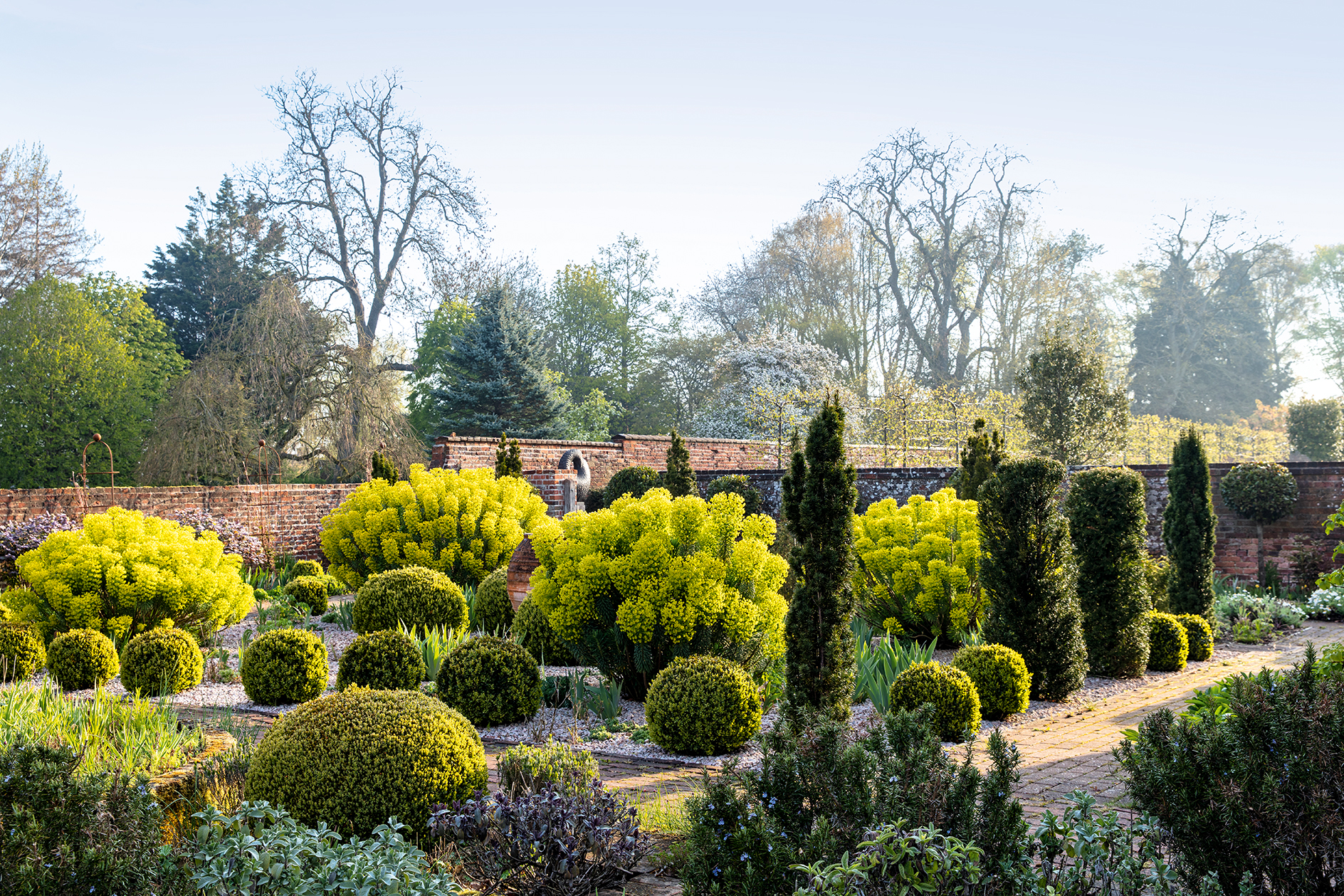
Their aim was to balance historical integrity with the development of a new garden. Continuity would be kept by preserving the garden’s bones, such as the walled garden and the fine trees beyond open lawn to the south and east. Work began on the rectangular walled kitchen garden.
The architecture on this side of the house is engagingly uneven and this is picked up in the new garden, which is neat and formal, but appropriately domestic in scale. The kitchen garden has been laid out afresh, with 16 rectangular patches divided by narrow gravel paths and with a square of four greengages in the centre. Crops are rotated and, every year, one bed celebrates an unusual plant, such as borlotti beans or root ginger. Elsewhere are nurtured asparagus and strawberry beds and a fruit cage with raspberries and gooseberries.
The seasonality of the kitchen garden is balanced at one end by the dry gravel garden where domes of Euphorbia wulfenii provide constant shape — and, in spring and early summer, many weeks of distinctive lime-green, flourishing alongside box balls and iris. The planting here and in nearby borders demonstrates Miss Jones’s meticulous approach (which manifests itself in a readiness to dig up and move plants that she happily confesses is at times compulsive) with seasonal combinations that include eryngiums, aquilegias, ‘Rozanne’ geraniums, herbaceous and tree peonies, followed by Verbena bonariensis and dahlias.
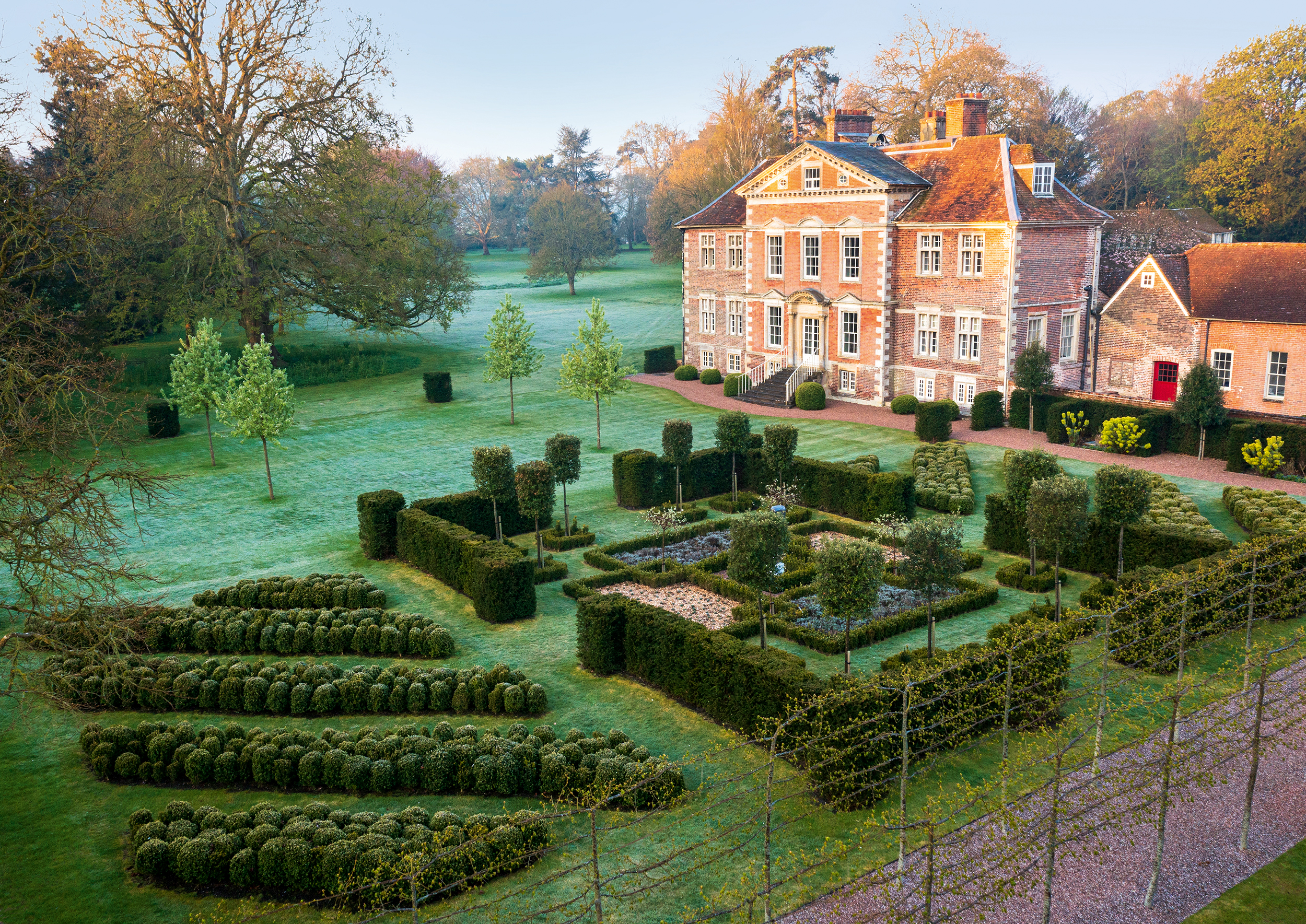
Mr Gazerwitz has been consulted on most elements of the couple’s work in the garden and he was responsible for the design of the rose garden with its impressive pergola. The designer’s practice, Del Buono Gazerwitz, run in partnership with his friend Tommaso del Buono, is known for the clean lines of its carefully formulated work. The rose garden is a good example, with roses arranged in a border along the far boundary wall and on the pergola, leaving the lawn simply decorated with two trios of ‘Mirabelle de Nancy’ plums and quince trees.
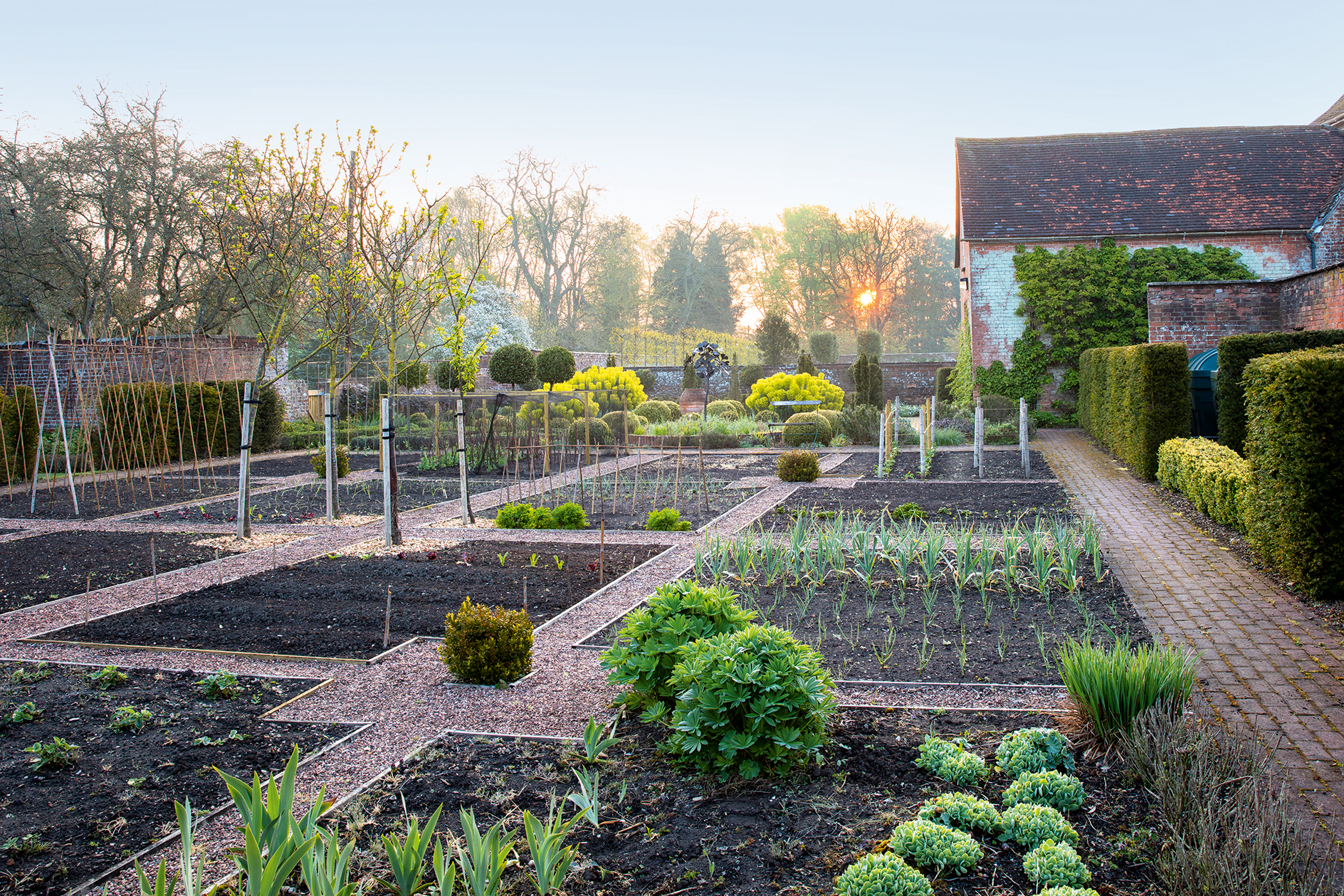
It is east of the house, to which the main 1680s façade looks, that Mr Gazerwitz has made his most telling contribution. ‘The whole area was crying out for something special, but in keeping with the restrained architecture of the house. We wanted to piece together the history without merely creating a facsimile, to do something that complemented the façade without obscuring it.’
Exquisite houses, the beauty of Nature, and how to get the most from your life, straight to your inbox.
The result was the insertion, at a distance, of the formal pool with elegantly rounded ends, which both closes the new vista and reflects the house. Two pairs of Pyrus nivalis, carefully selected for their upright shape and restricted size, were added to the sweep of lawn that stretches between the house and the pool.
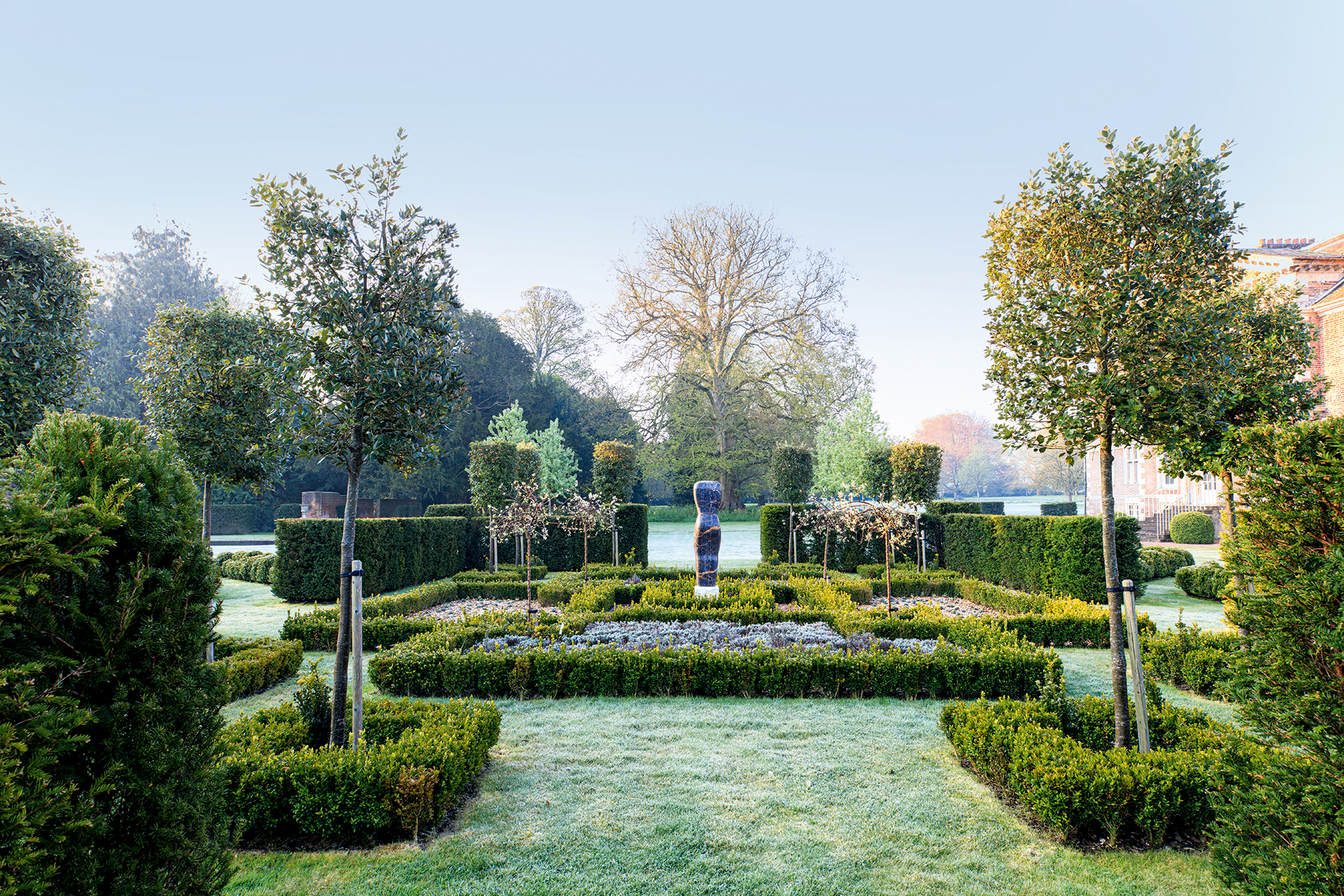
To one side of the new vista, where there had only been grass with a narrow border along the far boundary wall, Mr Gazerwitz designed a new formal garden that recalls the 17th-century period. He took inspiration from Westbury Court in Gloucestershire, one of the surviving masterpieces of the period, and created a detailed, but unfussy pattern, using blocks of lavender and standard weeping pears to contrast with the predominant evergreens and billowing masses of cloud-pruned box. The path was lined with pleached limes and the border was replanted with roses and peonies. A dramatic central sculpture by Paul Vanstone adds a contemporary flavour.
The Spiral Garden that lies beyond demonstrates Mr Gazerwitz’s skill at designing for progression from one area to another, from formal to informal. With curving beech hedges and contrasting rows of Irish yews that echo the lines of the pool, the whole decorated with groups of ‘Great White’ cherries, it is a place of contemplation, but also one of movement. It encourages you to progress from formality to the informality of the belt of natural woodland that lies beyond the garden’s boundary.
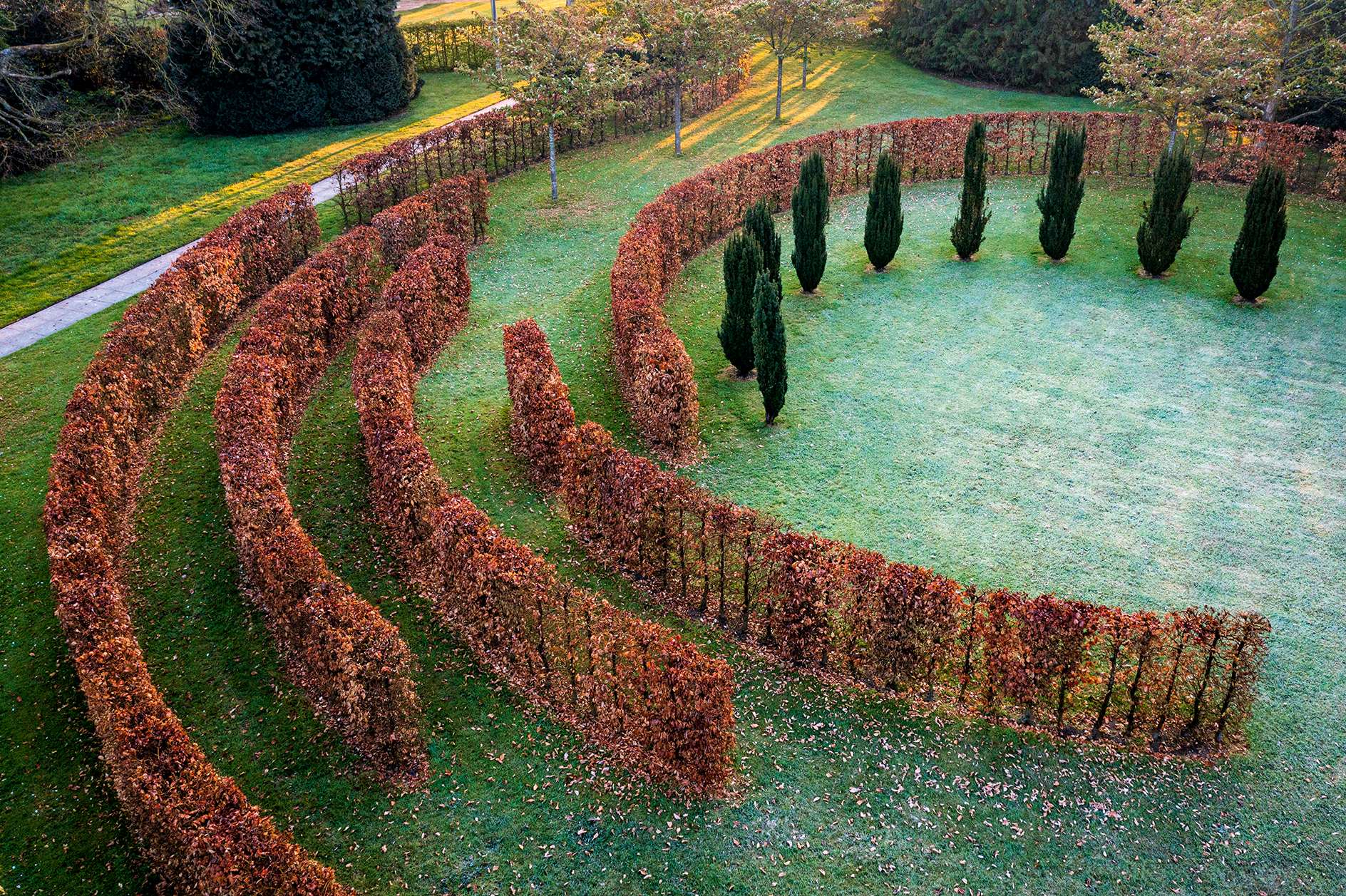
You emerge from the largely untouched woodland onto the lawn to the south of the house, where a selection of fine trees are a happy legacy of a late-19th-century owner. From here, the view back across the new formal garden through low blocks of clipped yew is both enticing and relaxing, qualities that this understated, but exceptionally well-restored garden has in spades.
Urchfont Manor, Urchfont, Wiltshire, opens for the first time for the National Garden Scheme on June 19 only — see www.ngs.org.uk or visit Urchfont on Instagram via @urchfont_manor_gardens.